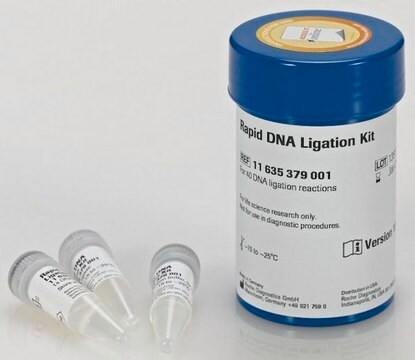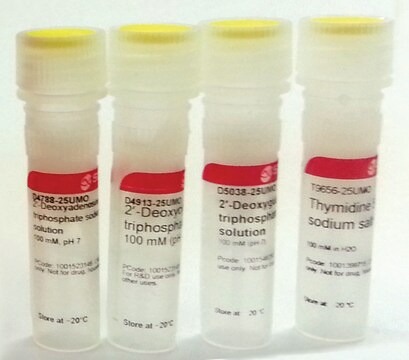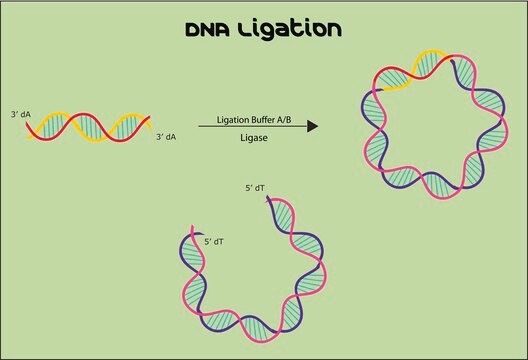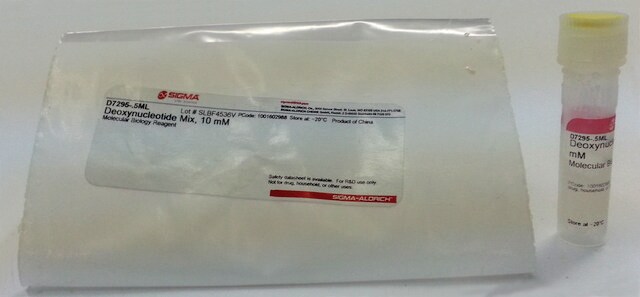D2886
DNA Ligase from T4-infected Escherichia coli
buffered aqueous glycerol solution
Synonym(s):
Polydeoxyribonucleotide Synthase, Polynucleotide Ligase, T4 DNA Ligase
About This Item
Recommended Products
grade
for molecular biology
Quality Level
form
buffered aqueous glycerol solution
specific activity
4,000 U/mL
mol wt
68 kDa
UniProt accession no.
storage temp.
−20°C
Gene Information
bacteriophage T4 ... 30(1258680)
Looking for similar products? Visit Product Comparison Guide
Related Categories
Application
- Ligation of blunt ended or cohesive DNA fragments
- Ligation of cloning vector and restriction insert fragments
- Seal nicks in double stranded DNA and RNA or DNA/RNA hybrids
- Couple RNA single strands by bridging oligonucleotide adapters
Biochem/physiol Actions
Components
Unit Definition
Other Notes
related product
Signal Word
Danger
Hazard Statements
Precautionary Statements
Hazard Classifications
Resp. Sens. 1
Storage Class Code
10 - Combustible liquids
WGK
WGK 1
Flash Point(F)
Not applicable
Flash Point(C)
Not applicable
Personal Protective Equipment
Regulatory Listings
Regulatory Listings are mainly provided for chemical products. Only limited information can be provided here for non-chemical products. No entry means none of the components are listed. It is the user’s obligation to ensure the safe and legal use of the product.
JAN Code
D2886PROC:
D2886-100UN-KC:
D2886-100UN:
D2886-500UN:
D2886-VAR:
D2886-BULK:
D2886-BULK-LBL:
D2886-300UN:
D2886-125UN:
D2886-500UN-KC:
D2886-250UN-KC:
Certificates of Analysis (COA)
Search for Certificates of Analysis (COA) by entering the products Lot/Batch Number. Lot and Batch Numbers can be found on a product’s label following the words ‘Lot’ or ‘Batch’.
Already Own This Product?
Find documentation for the products that you have recently purchased in the Document Library.
Customers Also Viewed
Protocols
T4 DNA Ligase catalyzes the formation of a phosphodiester bond between the terminal 5′ phosphate and a 3′ hydroxyl groups of duplex DNA or RNA. The enzyme efficiently joins blunt and cohesive ends and repairs single-stranded nicks in duplex DNA, RNA or DNA/RNA hybrids.
Our team of scientists has experience in all areas of research including Life Science, Material Science, Chemical Synthesis, Chromatography, Analytical and many others.
Contact Technical Service











